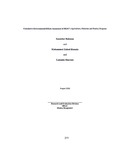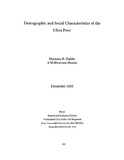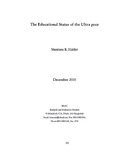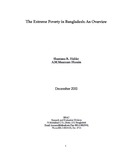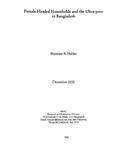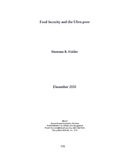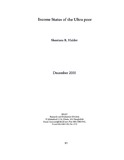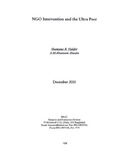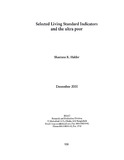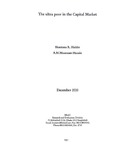Browsing Research Reports (2000): Economic Studies, Vol - XVI by Title
Now showing items 1-12 of 12
-
Cumulative environmental effects assessment of BRAC's agriculture, fisheries and poultry Program
(Research and Evaluation Division, Brac, 2000-08) -
Demographic and social characteristics of the ultra poor
(Research and Evaluation Division, Brac, 2000-12)This report aimed to understand the demographic, social and economic characteristics of the ultra poor. Analysis of data clearly showed that the ultra poor households were smaller in size than the rural average. One-third ... -
The educational status of the ultra poor
(Research and Evaluation Division, Brac, 2000-12)This report describes the state of education of the ultra poor by considering four indicators namely: net enrollment rate of children between 6-10 years of age, adult and household literacy rates, educational status of ... -
Employment and wage status of the ultra poor
(Research and Evaluation Division, Brac, 2000-12)This report looked into the employment status of the ultra poor and factors affecting the extent of employment. Findings showed that 92% of the households were with economically active population. Majority of the rest ... -
The extreme poverty in Bangladesh: an overview
(Research and Evaluation Division, Brac, 2000-12)By reviewing existing literature this report focuses on methodological issues related to the identification of ultra poor in Bangladesh. According to different statistics up to 40% of the rural poor in Bangladesh remains ... -
Female-headed households and the ultra poor in Bangladesh
(Research and Evaluation Division, Brac, 2000-12)This report focuses on the magnitude of FHHs among the poorest and examines their socio-economic profile to highlight the distinction between FHHs and the entire sample. Female-headed households (FHHs) are of two types: ... -
Food security and the ultra poor
(Research and Evaluation Division, Brac, 2000-12)This paper aims to derive some policy guidelines by analysing factors affecting food security of the ultra poor. Here more emphasis is given on the number of rice meals taken and the sources of rice consumed during the ... -
Income status of the ultra poor
(Research and Evaluation Division, Brac, 2000-12)This paper reports on income status, major sources of income and determinants of income of the ultra poor Mean per capita income was calculated to be Tk.3,385, per annum that was even less than the estimated lower poverty ... -
NGO intervention and the ultra poor
(Research and Evaluation Division, Brac, 2000-12)This report mainly discusses the perceptions of the ultra poor regarding NGO membership and their future development needs if they join NGOs like BRAC. It also focuses on reasons for membership discontinuation, issues ... -
The process of poverty and the ultra poor
(Research and Evaluation Division, Brac, 2000-12)This report focuses on the poverty process - how they become poor, the reasons for their falling into poverty. Poverty is multi-causal. On average 1.7 causes were identified by the respondents. Major causes of poverty ... -
Selected living standard indicators and the ultra poor
(Research and Evaluation Division, Brac, 2000-12)This report aimed to give a clear picture on the nature of their vulnerability and potentiality to cope wit by analysis their non-land asset base, ownership of savings and their level of human poverty. It was estimated ... -
The ultra poor in the capital market
(Research and Evaluation Division, Brac, 2000-12)This paper looks into the issue of accessibility of the capital market for the ultra poor by analyzing the extent of borrowing, their sources and uses of loan. One-fourth had access to any capital sources, and only about ...

